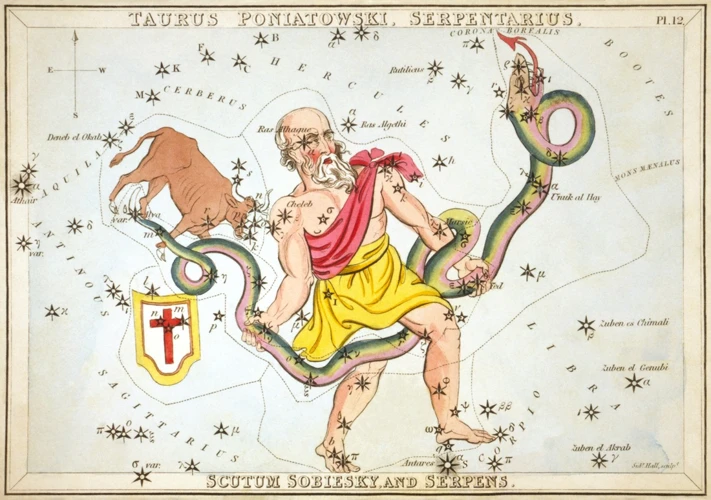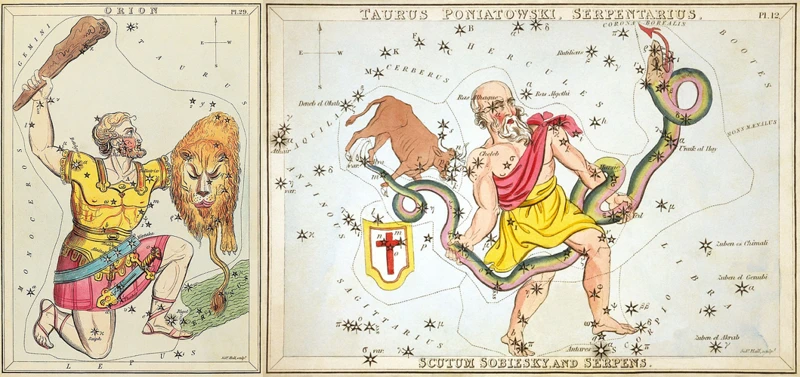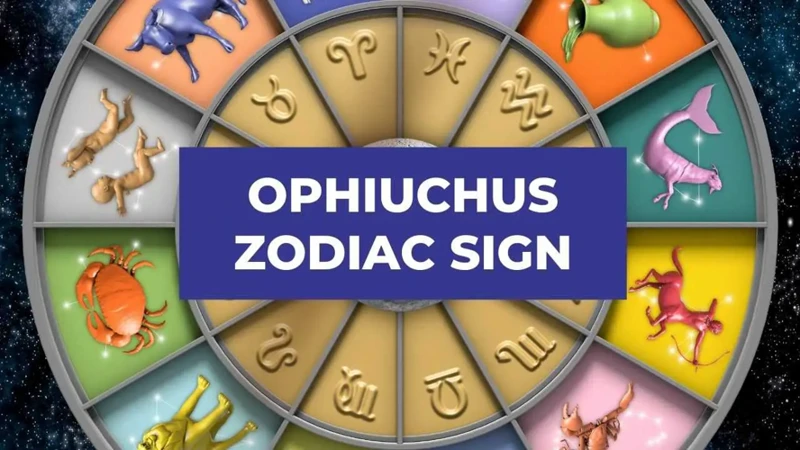The symbolism of snakes in mythology has captivated human beings for centuries. These fascinating creatures have evoked a sense of perplexity and wonder, as they embody a multitude of meanings and interpretations across various cultures and religions. From creation myths to tricksters, guardians to symbols of transformation, snakes hold a significant place in the collective human imagination. In this article, we will delve into the rich symbolism of snakes in mythology, exploring their roles as symbols of life and rebirth, chaos and destruction, tricksters, guardians, agents of transformation, and their presence in religious and spiritual practices. Join us on a captivating journey as we unravel the enigmatic nature of snakes in mythological narratives.
Contents
- The Serpent in Creation Myths
- The Snake as a Trickster
- Snakes as Guardians and Protectors
- Snakes as Symbols of Transformation
- Snakes in Religious and Spiritual Practices
- Conclusion
-
Frequently Asked Questions
- 1. Why are snakes commonly associated with creation myths?
- 2. Are snakes universally seen as symbols of chaos and destruction in creation myths?
- 3. How do snakes represent both life and death in creation myths?
- 4. Are there any specific mythological figures associated with serpents in creation myths?
- 5. Do snakes play a role in creation myths from Eastern cultures?
- 6. What is the significance of the serpent’s ability to slither on the ground and climb trees?
- 7. Are there any creation myths where snakes are portrayed as tricksters or deceptive figures?
- 8. Can the serpent’s shedding of its skin be viewed as a metaphor for personal transformation?
- 9. Are there any ancient civilizations where snakes were worshipped as sacred beings?
- 10. How have modern interpretations of snakes in creation myths evolved?
- References
-
Frequently Asked Questions
- What is the symbolism of snakes in mythology?
- How are snakes portrayed in creation myths?
- What does the serpent symbolize in terms of chaos and destruction?
- Are there any trickster snakes in mythology?
- Which mythologies feature trickster snakes?
- How do snakes serve as guardians and protectors?
- What is the significance of snakes as sacred guardians of knowledge?
- How are snakes depicted as protectors of the underworld?
- How do snakes symbolize transformation?
- How are snakes connected to religious and spiritual practices?
- References
- Read More
The Serpent in Creation Myths

The Serpent in Creation Myths has long represented a symbol of profound significance. In various mythologies, the serpent is often associated with the creation of the world and the origins of humankind. One prevalent interpretation of the serpent’s role in creation myths is its representation of life and rebirth. The serpent shedding its skin and emerging renewed and revitalized is seen as a metaphor for the cyclical nature of life and the eternal cycle of creation and destruction. Additionally, the serpent’s ability to slither on the ground and climb trees has been interpreted as a connection between the earthly realm and the divine. In some creation myths, the serpent is also associated with chaos and destruction, representing the primal forces that existed before the ordered world came into being. This duality of the serpent as both a bringer of life and a catalyst of chaos highlights its complex symbolism in creation myths. By delving into the intricate narratives of these myths, we can gain a deeper understanding of the profound role that serpents play in the creation and sustenance of the world we inhabit. To further explore the connection between serpents and creation myths, you may be interested in discovering the fascinating story of Ophiuchus, a mythical creature associated with serpents and healing.
The Serpent as a Symbol of Life and Rebirth
The Serpent as a Symbol of Life and Rebirth holds a significant place in mythologies around the world. The shedding of its skin has been interpreted as a representation of renewal and regeneration, symbolizing the cyclical nature of life. In ancient Egyptian mythology, the serpent god Apep was often associated with chaos and destruction, but also with the rejuvenating powers of the Nile River. The Ouroboros, a symbol of a serpent or dragon eating its tail, is another powerful representation of eternal life and the infinite cycle of birth, death, and rebirth. This symbol has appeared in various cultures, including ancient Greek and Norse mythology, as well as alchemical texts. The connection between serpents and life is further reinforced by their association with fertility and wisdom. In Hindu mythology, the serpent Ananta is said to support the universe on its infinite coils, symbolizing the sustaining power of life. The Greek god Asclepius, often depicted with a staff entwined by a serpent, represents healing and rejuvenation. These diverse cultural representations emphasize the serpent’s association with the eternal cycle of life and the transformative power of renewal. For a deeper exploration of mythical creatures associated with serpents and their compatibility with other zodiac signs, you can discover the intriguing Libra-Ophiuchus compatibility dynamic.
The Serpent as a Symbol of Chaos and Destruction
The Serpent as a Symbol of Chaos and Destruction holds a prominent place in many mythological traditions. In these myths, the serpent is often portrayed as a force of disorder and disruption, capable of bringing about destruction and upheaval. One significant example can be found in the story of the ancient Egyptian god Apophis, a giant serpent who symbolized chaos and attempted to devour the sun god Ra. Apophis represented the primal forces of darkness and destruction that threatened to undo the order and harmony established by the gods. In Norse mythology, the monstrous serpent Jormungandr, known as the Midgard Serpent, encircled the world, creating an atmosphere of fear and uncertainty. Its presence symbolized the impending chaos and destruction that would come with the advent of Ragnarok, the end of the world. These mythological representations of serpents as harbingers of chaos and destruction highlight the human fascination with the destructive aspects of the natural world and the need to grapple with the forces that threaten the established order. To further explore mythical creatures associated with chaos and destruction, you can delve into the intriguing tale of Ophiuchus, a legendary creature said to possess the power to control serpents and heal the wounds they inflict.
The Snake as a Trickster

The Snake as a Trickster holds a prominent place in various mythologies and folklore. As a trickster figure, the snake is often depicted as cunning, mischievous, and deceitful. It uses its intelligence and slyness to trick and manipulate other characters, often with both humorous and dire consequences. One renowned example is the serpent in the Garden of Eden from Judeo-Christian tradition. In this narrative, the snake tempts Eve with the promise of knowledge, leading to humanity’s expulsion from paradise. Similarly, in African mythology, the trickster snake Anansí is known for outwitting other animals and obtaining their wisdom for himself. The snake’s role as a trickster highlights its ability to challenge established norms and question authority. Its cleverness and ability to navigate between realms make it a fascinating and complex character in mythical storytelling. Whether it is playing pranks, testing the boundaries of social order, or imparting wisdom through its deceitful actions, the snake’s trickster nature adds depth and intrigue to mythological narratives.
Trickster Snakes in Different Mythologies
Trickster Snakes in Different Mythologies have played mischievous and cunning roles in various cultural narratives. These serpents often possess supernatural powers and are known for their ability to deceive, manipulate, and outwit others. In Norse mythology, the trickster serpent Jormungandr, also known as the Midgard Serpent, is a prominent figure. This immense sea serpent is said to encircle the world, biting its own tail, and causing immense chaos. In Greek mythology, the serpent Python is another well-known trickster. Python guarded the Oracle of Delphi and would give ambiguous and misleading prophecies, testing the wits and wisdom of those who sought guidance. In African mythology, the trickster serpent Anansi is a beloved figure. Anansi often takes the form of a spider or a snake and uses cleverness and trickery to navigate challenges and bring about change. These trickster serpents serve as reminders of the dual nature of life, where chaos and deception can ultimately lead to growth and wisdom. Their tales continue to entertain and provoke introspection about the unpredictable and intricate nature of human existence.
Snakes as Guardians and Protectors

Snakes have often been revered as sacred guardians and protectors in mythology. Across various cultures, these slithering creatures are associated with knowledge, wisdom, and protection. In some mythological traditions, such as ancient Mesopotamia and Egypt, serpents were considered the guardians of sacred spaces, temples, and tombs. They were believed to possess divine qualities and were regarded as intermediaries between the mortal realm and the divine. The image of a coiled serpent can still be seen adorning numerous ancient artifacts and structures, symbolizing their role as protectors and guardians. Snakes are also often associated with the underworld, acting as guardians of hidden treasures and secret realms. In Hindu mythology, the serpent god Vasuki is depicted with multiple heads, representing his ability to see in all directions and protect the realm of the gods. Similarly, in Greek mythology, the serpent-like creature known as the Python guarded the sacred Oracle of Delphi. These examples highlight the recurring theme of serpents as powerful protectors in various mythological traditions, demonstrating their esteemed status as guardians of sacred knowledge and realms.
Snakes as Sacred Guardians of Knowledge
Snakes have frequently been revered as sacred guardians of knowledge in various mythologies and belief systems. In several ancient cultures, such as the Mayans, Egyptians, and Greeks, snakes were associated with wisdom, intuition, and mystical knowledge. The image of a snake coiled around a staff, known as the Rod of Asclepius, is a symbol of healing and medicine that originated in ancient Greek mythology. The serpent in this context represents the power of healing and the acquisition of knowledge related to medicine and health.
Another notable example is the Aztec god Quetzalcoatl, often depicted as a feathered serpent. Quetzalcoatl was considered a bringer of knowledge, civilization, and enlightenment to humanity. In Mesoamerican mythology, the god was associated with education, arts, philosophy, and the sciences. The depiction of Quetzalcoatl as a snake symbolized his role as a guardian and bestower of wisdom.
In Hindu mythology, the serpent deity known as Ananta Shesha is believed to be the cosmic serpent on which Lord Vishnu rests. Ananta Shesha is associated with infinite knowledge and serves as a symbol of divine wisdom and cosmic order. The serpent’s association with Vishnu signifies its role as a sacred guardian and preserver of knowledge within the Hindu pantheon.
The symbolism of snakes as sacred guardians of knowledge is also prevalent in the story of the Garden of Eden in Judeo-Christian traditions. In this narrative, the serpent is depicted as a cunning creature that tempts Eve to eat the forbidden fruit from the Tree of Knowledge. Although seen as the instigator of mankind’s fall from grace, the serpent represents the pursuit of knowledge and the eternal quest for enlightenment.
Through various mythologies, snakes have been revered as keepers of hidden wisdom, esoteric knowledge, and spiritual enlightenment. Their ability to navigate the underworld and shed their skin represents their connection to the deeper realms of consciousness and the transformative power of knowledge. By exploring the symbolism of snakes as sacred guardians of knowledge, we gain a deeper appreciation for their role as intermediaries between the earthly and divine realms.
Snakes as Protectors of the Underworld
Snakes have long been revered as protectors of the underworld in various mythological traditions. In many cultures, they are believed to guard the entrance to the realm of the dead. One prominent example of this belief can be found in Ancient Egyptian mythology, where the uraeus, a stylized representation of a cobra, adorned the crowns of pharaohs, symbolizing their authority and protection. The snake’s association with the underworld stems from its ability to slither through the dark, hidden recesses of the earth, just as it can navigate through the mysteries of the afterlife. This connection between snakes and the underworld is not limited to a single culture, as similar beliefs can be found in Greek mythology as well. In Greek lore, the monstrous serpent-like creature known as the Hydra guarded the entrance to the underworld, posing a formidable challenge to any who sought to journey to the realm of the dead. The image of the snake as a guardian of the underworld showcases its role as a symbol of protection and power, bridging the gap between the mortal realm and the mysterious realms beyond. To further explore the mythical creatures associated with the underworld, you may be interested in learning about the fascinating tales of the Ophiuchus, a figure from Greek mythology associated with serpents and healing.
Snakes as Symbols of Transformation

Snakes have long been regarded as powerful symbols of transformation in mythologies worldwide. The shedding of their skin is a remarkable natural phenomenon that has been interpreted as a metaphor for personal growth, renewal, and rebirth. This transformative quality is evident in various mythological narratives where snakes are associated with profound change and inner transformation. In Greek mythology, the god Hermes is often depicted with snakes intertwined around his staff, known as the caduceus. This symbolizes the union of opposites and the transformative power of healing and knowledge. The symbol of the Caduceus is still widely used in modern medicine today as a representation of healing and transformation. In Hindu mythology, the snake deity Shesha serves as the bed for the god Vishnu, highlighting the snake’s association with cosmic power and transformation. Similarly, in Norse mythology, the serpent Jormungandr encircles the world and plays a pivotal role in the cosmic cycle of destruction and rebirth during Ragnarok. The concept of snakes as agents of transformation extends beyond mythology and into shamanistic practices as well. Shamanic traditions often employ snake imagery, symbolizing the ability to navigate the realms of the spiritual and physical, facilitating transformative experiences through altered states of consciousness. Snakes, with their ability to shed their skin, slither on the ground, and move through hidden crevices, serve as potent symbols of personal and spiritual transformation throughout various mythologies and belief systems.
Snakes as Agents of Transformation
Snakes have long been associated with the power of transformation in various mythologies and cultural beliefs. They serve as potent symbols of metamorphosis and change due to their ability to shed their old skin and emerge refreshed and renewed. In many stories, the snake’s transformative qualities are seen as a reflection of its adaptability and resilience. The process of shedding old skin can be interpreted as a metaphor for personal growth and evolution. Just as the snake discards its old self, humans can also cast off their past limitations and embrace new beginnings. The snake’s ability to move effortlessly through tight spaces and squeeze into crevices allows it to navigate the unseen realms, making it a symbol of accessing hidden knowledge and acquiring wisdom. The snake’s association with healing and medicine strengthens its connection to transformation, as healing often involves the process of transforming illness into wellness. In cultures where snake venom is used for medicinal purposes, the serpent becomes a powerful metaphor for the potential for transformation and healing. It serves as a reminder that even the most venomous aspects of life can be transmuted into something beneficial. The symbolism of snakes as agents of transformation offers a profound insight into the human capacity for growth, change, and renewal. Whether it is through personal development, spiritual awakening, or overcoming challenges, the snake’s symbolism serves as an inspiration for individuals to embrace the transformative journey of life.
Snake Symbolism in Shamanistic Practices
Snake Symbolism in Shamanistic Practices holds a deep-rooted significance in cultures around the world. Shamans, revered as spiritual guides and healers, have long incorporated the symbolism of snakes into their rituals and practices. In shamanism, snakes are often seen as agents of transformation, representing the process of shedding old patterns and embracing new beginnings. The shedding of a snake’s skin is seen as a powerful symbol of rebirth and spiritual growth. Additionally, snakes are believed to possess inherent wisdom and the ability to navigate between realms, making them ideal allies for shamans in their spiritual journeys.
In some shamanistic cultures, snakes are revered as sacred guardians and teachers of higher knowledge. They are seen as mediators between the earthly and divine realms, able to access hidden wisdom and provide guidance to shamans in their quests for enlightenment. The image of the serpent coiling and uncoiling is often used as a visual representation of the serpent’s ability to move between different levels of consciousness.
Shamans have also been known to invoke the snake’s energy to aid in healing practices. The serpentine movements and energy of the snake are believed to possess potent transformative powers, capable of restoring balance and harmony within individuals and communities. Snake imagery and rituals, such as snake dances or snake-shaped staffs, are utilized as tools to evoke this transformative energy and support healing processes.
It is important to note that the specific symbolism and practices surrounding snakes in shamanistic traditions can vary widely across different cultures and regions. Each culture brings its own unique interpretations and rituals to this ancient and revered symbolism. By tapping into the powerful symbolism of snakes, shamans embrace the serpentine energy as a catalyst for spiritual growth, healing, and profound transformation.
Snakes in Religious and Spiritual Practices

Snakes hold a prominent place in religious and spiritual practices across cultures and belief systems. In Judeo-Christian traditions, the serpent is famously depicted as a trickster figure in the biblical story of Adam and Eve, where it tempts Eve to eat the forbidden fruit, thus leading to the fall of humanity. The serpent represents temptation and deception in this context. However, in some Eastern religions and philosophies, the snake is revered as a symbol of wisdom and spiritual awakening. For example, in Hinduism, Lord Shiva, one of the principal deities, is often portrayed with a snake coiled around his neck, representing his mastery over the primal life force and his divine knowledge. In Kundalini yoga, the coiled serpent symbolizes the dormant spiritual energy located at the base of the spine, believed to be awakened through spiritual practices. In indigenous shamanistic traditions, snakes are regarded as powerful agents of transformation and healing. The shedding of their skin is seen as a metaphor for personal growth and spiritual renewal. Snakes are sometimes associated with the underworld, where they act as protectors and guides for the souls of the deceased. The presence of snakes in religious and spiritual practices is multifaceted, representing different aspects such as temptation, wisdom, transformation, and the connection between earthly and divine realms. Their symbolism continues to inspire awe and contemplation in those who seek to explore the deeper realms of spirituality.
Serpents in Judeo-Christian Traditions
Serpents hold a significant place in Judeo-Christian traditions, playing a pivotal role in several key narratives. One of the most well-known instances is found in the Book of Genesis, where the serpent appears as a cunning and deceptive character in the Garden of Eden. Here, the serpent tempts Eve to eat the forbidden fruit, leading to the expulsion of Adam and Eve from paradise. In this context, the serpent serves as a symbol of temptation, deceit, and the embodiment of evil. This association with the serpent as a force of temptation and deception is carried forward in the broader Christian tradition, where it often represents Satan or the devil. Additionally, the serpent is also associated with the concept of divine healing and salvation. In the Gospel of John, Jesus compares himself to the bronze serpent that Moses lifted up in the wilderness, asserting that those who look upon him will find spiritual healing and eternal life. This paradoxical symbolism reflects the dual nature of the serpent, which can embody both malevolence and redemption within Judeo-Christian traditions. Understanding the significance of serpents in Judeo-Christian traditions allows us to grasp the complexity of their symbolic presence and the profound role they play in shaping religious narratives and beliefs.
Snakes in Eastern Religions and Philosophies
Snakes hold significant symbolism in various Eastern religions and philosophies. In Hinduism, the snake is revered as a powerful symbol of divinity and cosmic energy. Lord Shiva, one of the major deities in Hinduism, is often depicted with a snake coiled around his neck, known as Vasuki. The snake represents Kundalini, the dormant spiritual energy believed to reside within each individual. When awakened, Kundalini ascends through the chakras, leading to enlightenment. In Chinese mythology, the snake is associated with wisdom, transformation, and healing. The concept of the snake shedding its skin is seen as a metaphor for personal growth and rebirth. In Taoism, the snake is regarded as a symbol of the eternal cycle of life, death, and regeneration. It represents the harmonious balance of opposing forces, known as yin and yang. Additionally, in Japanese folklore, the snake is linked to the mythical creature called the Orochi, a fearsome serpent with eight heads and eight tails. The Orochi is often depicted as a destructive force, embodying chaos and natural disasters. The presence of snakes in Eastern religions and philosophies demonstrates the multifaceted nature of their symbolism, encompassing themes of divinity, wisdom, transformation, and the delicate balance of existence.
Conclusion

In conclusion, the symbolism of snakes in mythology is incredibly diverse and multifaceted. Throughout different cultures and belief systems, snakes have held various meanings and representations. They are often seen as powerful symbols of life and rebirth, with their shedding of skin serving as a metaphor for renewal and transformation. At the same time, snakes also embody chaos and destruction, representing the primal forces that existed before the ordered world came into being. Furthermore, snakes are frequently portrayed as tricksters, guardians, and agents of transformation, playing integral roles in shaping mythical narratives. They are revered as sacred creatures, guardians of knowledge, and protectors of the underworld. Moreover, snakes hold significant religious and spiritual significance in various traditions, such as in Judeo-Christian traditions and Eastern religions. The enigmatic nature and rich symbolism of snakes in mythology continue to captivate and intrigue human imaginations worldwide. By delving into the intricate mythology surrounding snakes, we gain a deeper appreciation for their profound symbolism and the timeless cultural significance they hold.
Frequently Asked Questions

1. Why are snakes commonly associated with creation myths?
Snakes are often associated with creation myths due to their symbolism of regeneration and transformation. Their ability to shed their skin and emerge renewed connects them to the cyclical nature of life and the concept of rebirth.
2. Are snakes universally seen as symbols of chaos and destruction in creation myths?
No, the interpretation of snakes as symbols of chaos and destruction in creation myths varies across different cultures. While some mythologies associate snakes with chaos, others view them as bringers of wisdom and knowledge.
3. How do snakes represent both life and death in creation myths?
In creation myths, snakes symbolize life through their connection to the cycles of renewal and rebirth. Simultaneously, they represent death as they shed their skin, leaving behind their old selves. This dual symbolism reflects the intertwined nature of life and death.
4. Are there any specific mythological figures associated with serpents in creation myths?
Yes, one prominent figure is the Aztec deity Quetzalcoatl, who is often depicted as a feathered serpent and is associated with creation and the renewal of life. Quetzalcoatl played a significant role in many creation myths of ancient Mesoamerican civilizations.
5. Do snakes play a role in creation myths from Eastern cultures?
Absolutely. In Chinese mythology, for example, the snake is associated with the creation of the universe and represents both yin and yang energies. In Hindu mythology, the serpent god Vasuki plays a vital role in the creation of the world.
6. What is the significance of the serpent’s ability to slither on the ground and climb trees?
The serpent’s ability to traverse both the ground and the trees symbolizes its connection between the earthly realm and the divine. It represents the link between the material and spiritual worlds, often portraying serpents as mediators between gods and humans.
7. Are there any creation myths where snakes are portrayed as tricksters or deceptive figures?
Yes, in some creation myths, snakes are depicted as tricksters who deceive other characters or play mischievous roles. This adds complexity to their symbolism, showcasing their multifaceted nature within mythology.
8. Can the serpent’s shedding of its skin be viewed as a metaphor for personal transformation?
Absolutely. The serpent shedding its skin and emerging renewed can be interpreted as a metaphor for personal transformation, growth, and the ability to leave behind old obstacles or identities.
9. Are there any ancient civilizations where snakes were worshipped as sacred beings?
Yes, snakes were revered and worshipped in several ancient civilizations, including the Maya and Aztecs in Mesoamerica, the Egyptians in North Africa, and the Greeks in the Mediterranean. These cultures recognized the snake’s symbolism and believed in their divine powers.
10. How have modern interpretations of snakes in creation myths evolved?
Modern interpretations of snakes in creation myths have become more nuanced and diverse. Scholars and enthusiasts have delved deeper into cultural contexts and symbolism, unveiling new layers of meaning and challenging preconceived notions about these fascinating creatures.
References
Frequently Asked Questions

What is the symbolism of snakes in mythology?
The symbolism of snakes in mythology varies across different cultures and belief systems. In many mythologies, snakes are often associated with powerful forces such as life, death, creation, chaos, and transformation. They can represent both positive and negative aspects, serving as symbols of wisdom, healing, protection, and trickery.
How are snakes portrayed in creation myths?
In creation myths, snakes are often depicted as symbolic of life and rebirth. They are seen as primal beings, associated with the cycles of nature and the renewal of life. In some mythologies, snakes are even seen as creators themselves, playing a significant role in the birth of the world and its inhabitants.
What does the serpent symbolize in terms of chaos and destruction?
Snakes can also symbolize chaos and destruction in mythology. They are often portrayed as powerful entities that disrupt order and challenge the established order of things. In some mythologies, they represent the forces of darkness and evil, causing destruction and upheaval wherever they appear.
Are there any trickster snakes in mythology?
Yes, trickster snakes exist in various mythologies. These serpents are known for their cunning and deceptive nature. They often use their wit and cleverness to outsmart other characters or deities, causing mischief and playing tricks on both humans and gods.
Which mythologies feature trickster snakes?
Trickster snakes can be found in different mythologies around the world. For example, in Norse mythology, the serpent Jormungandr is a trickster figure closely associated with chaos and destruction. In African mythology, the trickster snake Mami Wata is revered as a shapeshifter and bringer of both good and ill fortune.
How do snakes serve as guardians and protectors?
Snakes are often depicted as guardians and protectors in mythology. They are seen as wise and powerful beings that possess knowledge and offer protection to certain individuals or sacred places. In this role, snakes serve as intermediaries between the human world and the divine.
What is the significance of snakes as sacred guardians of knowledge?
In many myths, snakes are associated with knowledge and wisdom. They are regarded as keepers of secret knowledge, often represented by their ability to shed their skin and undergo transformation. Snakes are seen as symbols of hidden wisdom and the potential for personal growth through acquiring knowledge.
How are snakes depicted as protectors of the underworld?
In some mythologies, snakes are believed to be protectors of the underworld or realm of the dead. They guard the entrances or act as companions to deities associated with the afterlife. Snakes symbolize the transition between life and death, guiding souls on their journey to the underworld.
How do snakes symbolize transformation?
Snakes are powerful symbolic representations of transformation due to their ability to shed their skin and renew themselves. This natural process of renewal and rebirth makes them potent symbols of transformation, personal growth, and the cyclical nature of life.
How are snakes connected to religious and spiritual practices?
Snakes play significant roles in religious and spiritual practices worldwide. In Judeo-Christian traditions, the serpent is often associated with temptation and the fall of humanity. In Eastern religions and philosophies, they can symbolize cosmic energy, enlightenment, and balance.






